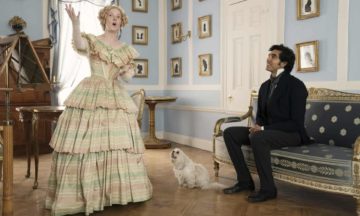John Mullan in The Guardian:
 Two years after Charles Dickens’s death in 1870, his closest friend, John Forster, published the first volume of his Life of Charles Dickens. Based on letters Dickens had written to him and stories he had told him, it was, in effect, an authorised biography. For Dickens buffs, it has always been both a matchless source and an untrustworthy narrative. By Helena Kelly’s account, it is more misleading than the most sceptical biographer has supposed. Far from Forster being Dickens’s hagiographer, he was his dupe. We have always known that Dickens aimed to manage his reputation; as Kelly sees it, this led him to deeper deceit than anyone has previously imagined.
Two years after Charles Dickens’s death in 1870, his closest friend, John Forster, published the first volume of his Life of Charles Dickens. Based on letters Dickens had written to him and stories he had told him, it was, in effect, an authorised biography. For Dickens buffs, it has always been both a matchless source and an untrustworthy narrative. By Helena Kelly’s account, it is more misleading than the most sceptical biographer has supposed. Far from Forster being Dickens’s hagiographer, he was his dupe. We have always known that Dickens aimed to manage his reputation; as Kelly sees it, this led him to deeper deceit than anyone has previously imagined.
So, for instance, Forster was the first to make public what Dickens said was the most crushing experience of his life: being sent, aged 12, to work in a blacking warehouse. It was an experience that he handed on to the young protagonist of David Copperfield. “It is wonderful to me how I could have been so easily cast away at such an age,” Dickens wrote, in the account Forster quoted. Yet Kelly picks at some inconsistencies about dates to suppose that it was all fiction. Dickens wanted us to believe he had been neglected and mistreated: it made for a great story of triumph over adversity.
More here.
